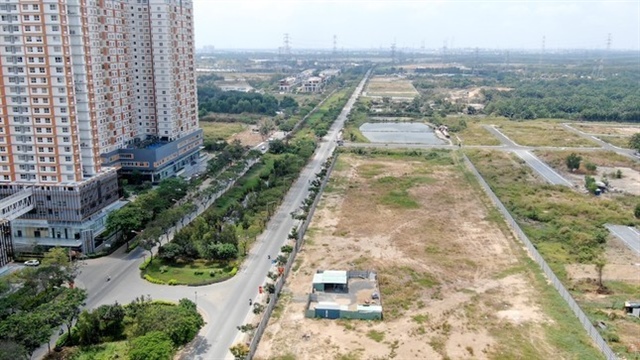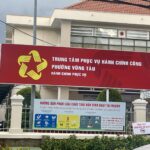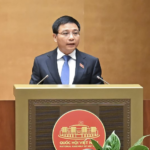Inconsistent Planning
Ho Chi Minh City’s Department of Construction has recently sent a document to the Department of Finance regarding the review and handling of difficulties and obstacles caused by contradictions between different types of planning.
According to the Department of Construction, there is a lack of consistency between land use planning and urban construction planning in Ho Chi Minh City, which has created challenges in planning management.
Specifically, these two types of planning differ in terms of their time periods and the units responsible for their development. Land use planning is formulated for a 10-year period (a five-year plan) and follows administrative boundaries, while urban construction planning has a long-term vision of 20 years, a short-term vision of 5-10 years, and its scope is not entirely based on administrative units.
Prior to the 2017 Planning Law, Ho Chi Minh City had a separate socio-economic development plan and an urban construction master plan. Currently, these two plans are still not well-aligned, with discrepancies in their goals and, more notably, their time frames. For instance, the city’s socio-economic development plan previously aimed for 2030, with a vision towards 2050, while the urban construction master plan was designed for the period up to 2040, with a vision towards 2060. As a consequence, during the period from 2030 to 2040, the urban construction plan lacks a basis for socio-economic development targets and has to make passive adjustments.
This lack of consistency results in misaligned development orientations for Ho Chi Minh City across different plans, leading to resource wastage and management challenges. Notably, the approved 2018 regional plan for Ho Chi Minh City (the Southern Key Economic Region) also contains directional content that has not been effectively integrated into the city’s plans.
Additionally, there is an overlap between sectoral planning and urban planning. Apart from the master plans, Ho Chi Minh City is also governed by numerous sectoral and technical plans (including transportation, infrastructure, and tourism). The integration of these plans in accordance with the Planning Law has resulted in overlaps or contradictions with the overarching urban plan.
For example, in certain cases, transportation planning may not align perfectly with urban construction planning. When implementing a key transportation infrastructure project, even a slight deviation from the approved transportation plan or the master plan could render the project unfeasible.
 The lack of consistency in planning has led to misaligned development orientations, resulting in resource wastage. |
Similarly, when developed in isolation, technical infrastructure plans for water supply and drainage, flood control, and energy may struggle to fully align with the existing urban construction plan.
Other plans, such as those related to minerals, energy, transportation, agriculture, and land use, continue to overlap, diluting the effectiveness of the master plans. This has caused investment projects to be put on hold or delayed due to procedural issues arising from their incompatibility with sectoral plans. Many projects have been left unfinished as they undergo assessments for compliance with a multitude of current plans, creating bottlenecks and incurring costs for businesses.
Legal Vacuum
Additionally, there are challenges during the transitional phase of integrated planning. Many plans from the previous period are due for review and adjustment under the Planning Law, but Ho Chi Minh City’s new integrated plan for 2021-2030 has not been approved in time.
In the case of the adjusted master plan for Ho Chi Minh City for the period up to 2040, with a vision towards 2060, there is a need for time to review and adjust the approved sub-regional plans based on the old master plan for the city. This creates a legal vacuum regarding the synchronization of planning levels, impacting the attraction and approval of investment projects.
Finally, there is a lack of clarity around the criteria for “compliance with planning” due to the ongoing transition in the planning system. Currently, there are multiple plans in effect (old plans, new plans, sectoral plans, etc.), and both authorities and investors face confusion when determining which plan a project should comply with and what that compliance entails.
There are no explicit regulations for assessing a project’s compliance with planning, especially at the stage of approving the investment proposal. This leads to delays in project approval as multiple overlapping plans need to be scrutinized.
The transition to a two-tier local government system will inevitably bring about a host of challenges related to planning.
To address these issues and ensure that planning management in Ho Chi Minh City complies with current laws, the Department of Construction proposes implementing seven synchronous solutions.
Specifically, it is necessary to review and adjust related plans synchronously; improve the legal framework on urban planning and land; issue specific guidance on the criteria for “compliance with planning,” clarifying which corresponding plan a project should be compared against based on its type. For instance, a housing project must comply with the approved 1/200 sub-regional plan, while a national-level infrastructure project must adhere to the national plan…
Next, it is crucial to integrate data systems and enhance transparency in planning information to enable easy access for citizens and businesses, thereby reducing the risk of misunderstandings due to a lack of planning information. Implementing a special mechanism for Ho Chi Minh City in planning work, enhancing planning management capabilities, fostering inter-sectoral coordination, and allocating resources for planning implementation are also proposed solutions.
Duy Quang
“The Dynamic Duo”: How Mergers and Infrastructure are Supercharging Ho Chi Minh City’s Real Estate Market
The approval of the resolution to merge provinces and cities by the National Assembly on June 12, 2025, has immediately brought the real estate market of the new Ho Chi Minh City (encompassing Ho Chi Minh City, Binh Duong, and Ba Ria-Vung Tau) into the spotlight. With the largest economy and population in the country, the real estate landscape in this region is anticipated to undergo significant transformations in the upcoming period.
The Eastern Promise: Unveiling the Masterplan for Ho Chi Minh City’s Eastern Functional Areas
The nine detailed planning projects at a scale of 1/2000 will serve as a crucial legal foundation to alleviate challenges faced by businesses and residents, enhance the investment environment, and vigorously attract and mobilize investment resources into Thu Duc City.
The New Look of Ba Ria-Vung Tau’s Ward and Commune Offices: Unveiling the Fresh Facade
“As the countdown to their official merger with Ho Chi Minh City began, several communes and wards in Ba Ria-Vung Tau province embarked on a transformative journey, unveiling new signage that reflected their soon-to-be-adopted names. This proactive initiative signaled a dynamic shift, paving the way for a seamless integration process and a unified future ahead of the official transition.”













































